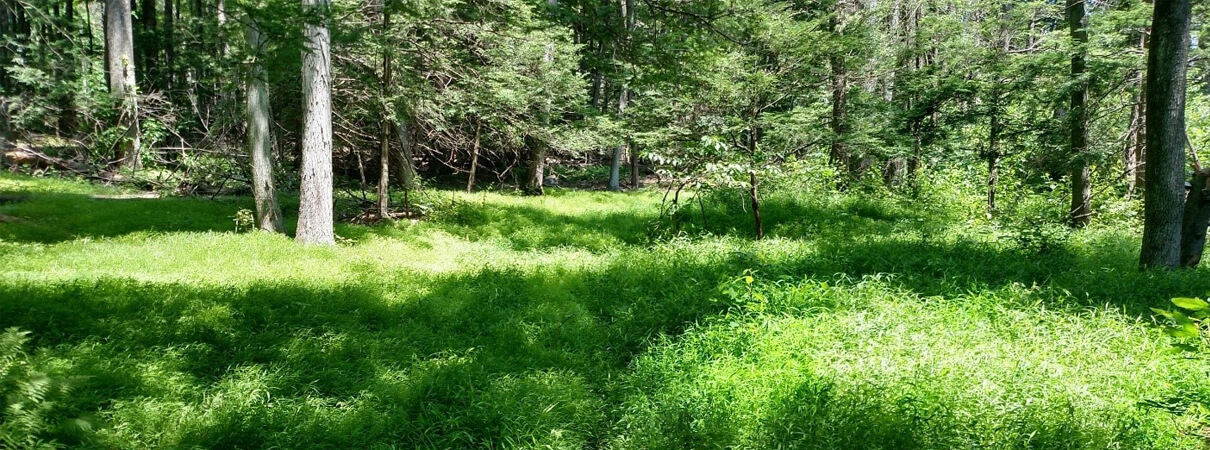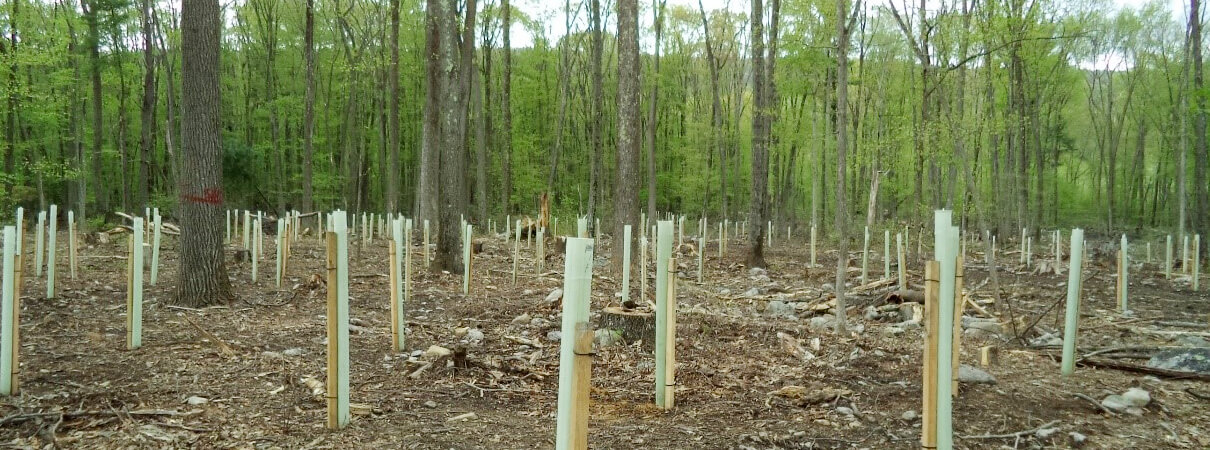Sustainable Forestry for Cerulean Warblers
Chris Schucker's property in Berks County, Pennsylvania, has been in his family for generations, starting with the family farm purchased by his great-grandfather in 1921. The Schucker family was in the lumber business, and Chris thought he knew trees pretty well.
“I grew up being at the mill,” Schucker said. “I know about trees.” But, when he started to notice a substantial decline in the health of his woods, he realized he didn't know what to do to reverse the decline.
“In this process I learned how much I didn't know. It turns out, knowing about cutting trees is different than knowing how to grow trees and create wildlife habitat.”
The decline of Eastern Hemlocks on the property due to an invasive pest called the Hemlock Woolly Adelgid, and multiple outbreaks of Gypsy Moth, a non-native insect that defoliates oaks and other hardwoods, had led to invasions by non-native plants such as Japanese stilt grass. The oak trees were also declining.
“We realized something had to be done now to manage the property,” Schucker said.

Sustainable forestry activities on Schucker's 78 acres are designed to benefit Cerulean Warblers, among other wildlife species. Photo by Tessa Nickels
Overall, Schucker's goal for managing his property is to improve the health of his forest and offer high-quality habitat for a variety of wildlife species. To accomplish this, he started working with Natural Resources Conservation Service and other conservation partners through the Regional Conservation Partnership Program (RCPP). He is implementing a variety of sustainable forestry practices on 78 acres to benefit Cerulean Warbler, a rapidly disappearing migratory songbird, and other wildlife species.
These practices include controlling non-native and invasive plants, removing less-desirable trees while retaining the healthiest trees, and planting native trees and shrubs in areas lacking natural regeneration of desirable species.
While Schucker has not yet completed all the practices included in his forest management project, he is already starting to see benefits from the elimination of invasive species.
“We were on the edge of a major invasion of stilt grass. Had we waited two years, I think we'd be completely overrun. … I think we just caught it before it overtook the forest.”
Schucker says the ongoing technical assistance he has received from NRCS and partners, including the Pennsylvania Department of Conservation and Natural Resources and American Bird Conservancy, has been invaluable in helping him reach his management goals.
“From my perspective as a landowner, the best thing has been that there are resources available for forest landowners.”
A version of this article first appeared in the Pennsylvania 2018 NRCS Annual Report, which can be downloaded here.
 | Amanda Duren is Habitat Delivery Coordinator for the Appalachian Mountains Joint Venture. She graduated from the University of Delaware with a Masters in Wildlife Ecology, and earned a Bachelor's degree from Pennsylvania State University in Environmental Resource Management. |




















































